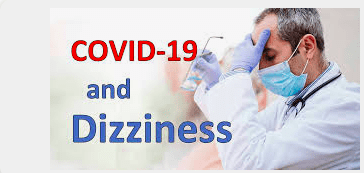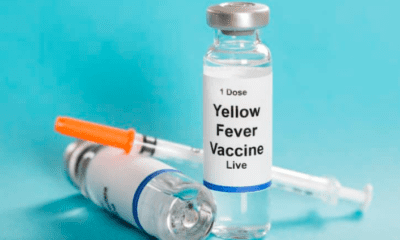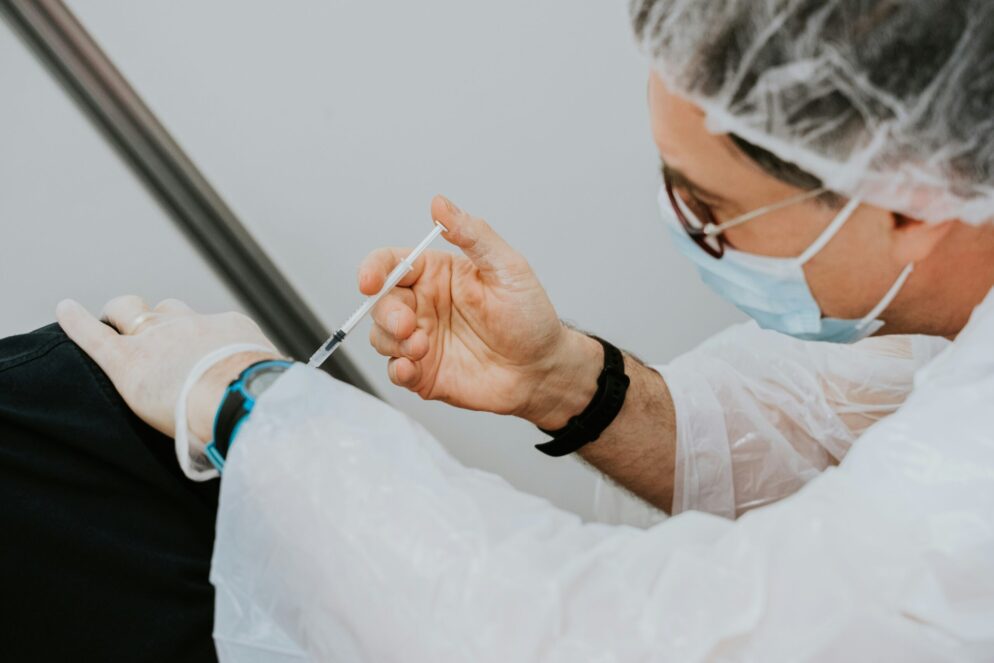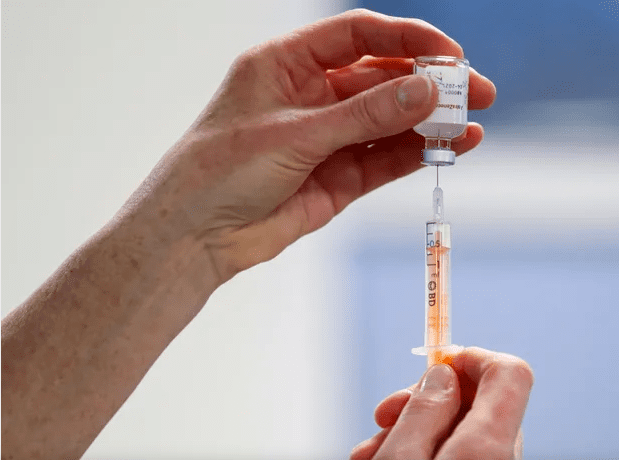Health
Preventing COVID-19 During Pregnancy: Essential Precautions for Expecting Mothers

Preventing COVID-19 During Pregnancy: Essential Precautions for Expecting Mothers
As the world continues to grapple with the ongoing COVID-19 pandemic, it is crucial for everyone, including pregnant women, to take necessary precautions to protect themselves and their unborn babies.
Pregnancy is a delicate phase, and expectant mothers need to be extra cautious to minimize the risk of contracting the virus. In this article, we will discuss the essential precautions that pregnant women should take to prevent COVID-19 and ensure a healthy pregnancy.
First and foremost, it is important for pregnant women to practice good hand hygiene. This means washing hands frequently with soap and water for at least 20 seconds. If soap and water are not readily available, using hand sanitizer with at least 60% alcohol can be an effective alternative.
It is also advisable to avoid touching the face, especially the eyes, nose, and mouth, as this can be a common way for the virus to enter the body.
In addition to hand hygiene, pregnant women should also practice social distancing. This means maintaining a distance of at least six feet from others, especially those who are sick or showing symptoms of COVID-19.
It is important to avoid crowded places and gatherings where the risk of exposure to the virus is higher. If it is necessary to go out in public, wearing a mask can provide an extra layer of protection.
Furthermore, pregnant women should be mindful of their overall health and well-being during this time. It is important to eat a balanced diet, exercise regularly, and get enough sleep to support a strong immune system.
Additionally, staying hydrated and managing stress levels can also contribute to a healthy pregnancy. Taking prenatal vitamins as prescribed by a healthcare provider is also crucial to ensure that both the mother and baby are getting the necessary nutrients.
Regular prenatal care is essential for pregnant women, even during the pandemic. It is important to attend all scheduled appointments with healthcare providers and follow their recommendations.
Telehealth appointments may be an option for certain check-ups, but in-person visits are necessary for certain tests and procedures. Healthcare providers will also be able to guide any specific concerns or questions related to COVID-19 and pregnancy.
In conclusion, pregnant women need to take extra precautions to prevent COVID-19 and ensure a healthy pregnancy. Practicing good hand hygiene, maintaining social distancing, and taking care of overall health are essential steps in minimizing the risk of contracting the virus.
Regular prenatal care and following healthcare provider’s recommendations are also crucial during this time. By taking these precautions, expectant mothers can protect themselves and their unborn babies from COVID-19 and have a safe and healthy pregnancy.
Understanding the Risks for Pregnant Women
Pregnant women are generally considered to be at a higher risk of developing severe complications from respiratory infections. This is because pregnancy can alter the immune system and make expectant mothers more susceptible to respiratory viruses like COVID-19.
Additionally, pregnant women with underlying health conditions such as diabetes, hypertension, or obesity may face an even greater risk.
It is important to note that while the overall risk of severe illness or complications from COVID-19 is low for pregnant women, taking preventive measures is crucial to safeguard both maternal and fetal health.
One of the main concerns for pregnant women is the potential impact of COVID-19 on the developing fetus. Research suggests that the virus can cross the placenta and infect the fetus, leading to adverse outcomes such as preterm birth, fetal distress, or even stillbirth. However, it is important to note that these cases are relatively rare, and most babies born to mothers with COVID-19 are healthy.
Another risk factor for pregnant women is the potential exacerbation of underlying health conditions. Conditions such as diabetes, hypertension, and obesity can increase the risk of severe illness from COVID-19 in general.
However, when combined with pregnancy, these conditions may further elevate the risk. Pregnant women with these underlying health conditions should take extra precautions to minimize their exposure to the virus and seek medical advice promptly if they develop any symptoms.
Furthermore, pregnant women are more likely to experience severe symptoms if they contract COVID-19. Respiratory infections can put additional strain on the body during pregnancy, leading to complications such as pneumonia or respiratory failure.
This is why pregnant women must practice strict preventive measures, including wearing masks, practicing good hand hygiene, and maintaining social distancing.
While the risk of severe illness or complications from COVID-19 is low for pregnant women overall, it is important to remember that every pregnancy is unique. Factors such as gestational age, overall health, and access to healthcare can all influence the outcomes for pregnant women with COVID-19.
Therefore, it is essential for expectant mothers to stay informed, follow the guidance of healthcare professionals, and prioritize their health and the health of their unborn child.
Get Vaccinated: Vaccination against COVID-19 is an important step in protecting both pregnant women and their unborn babies. It is recommended that pregnant women consult with their healthcare providers to discuss the benefits and risks of vaccination and make an informed decision based on their individual circumstances.
Take Extra Precautions in High-Risk Situations: Pregnant women who work in healthcare settings or have close contact with individuals who are at a higher risk of contracting COVID-19 should take extra precautions. This may include wearing additional personal protective equipment, following strict infection control measures, and minimizing exposure as much as possible.
Ensure a Clean and Sanitized Environment: Pregnant women should ensure that their living spaces are clean and properly sanitized. Regularly disinfect frequently touched surfaces such as doorknobs, light switches, and countertops. Good ventilation is also important to improve air circulation.
Seek Medical Help if Experiencing Symptoms: If a pregnant woman experiences symptoms such as fever, cough, difficulty breathing, or loss of taste or smell, it is important to seek medical help promptly. Healthcare providers can provide guidance and determine if further testing or treatment is necessary.
Communicate with Healthcare Providers: Open communication with healthcare providers is crucial during this time. Pregnant women should inform their healthcare providers about any potential exposure to COVID-19 or any changes in their health status. This will help healthcare providers in providing appropriate care and guidance.
Take Care of Mental Health: The pandemic and its associated stressors can take a toll on mental health. Pregnant women should prioritize self-care and seek support if needed. This may include reaching out to mental health professionals, joining support groups, or talking to trusted friends and family members.
Encourage Supportive Relationships: Building a strong support system is important during pregnancy, especially during challenging times. Pregnant women should seek support from their partners, family members, and friends. Virtual connections can also be valuable in maintaining social connections while practicing physical distancing.
By following these precautions, pregnant women can minimize the risk of COVID-19 and ensure the health and well-being of themselves and their unborn babies.
What to Do If You Suspect COVID-19
If a pregnant woman experiences symptoms such as fever, cough, difficulty breathing, or loss of taste or smell, it is important to seek medical advice promptly. Contacting the healthcare provider and following their instructions is crucial to receive appropriate care and guidance.
It is advisable to call ahead before visiting a healthcare facility to inform them about the symptoms and seek advice on the next steps. Healthcare professionals will provide guidance on whether testing is necessary and the appropriate measures to be taken.
In addition to seeking medical advice, there are several steps a pregnant woman can take if she suspects she may have COVID-19. First and foremost, it is important to self-isolate immediately to prevent the potential spread of the virus to others. This means staying at home and avoiding contact with family members, friends, and colleagues.
During self-isolation, it is essential to monitor symptoms closely and keep a record of any changes or developments. This information will be valuable when discussing the situation with healthcare professionals.
It is also important to maintain good hygiene practices, such as washing hands frequently with soap and water for at least 20 seconds, using hand sanitizer when soap is not available, and avoiding touching the face.
While self-isolating, it is crucial to take care of one’s physical and mental well-being. This can be achieved by getting plenty of rest, staying hydrated, and eating a balanced diet.
Engaging in activities that promote relaxation and reduce stress, such as practicing mindfulness or engaging in hobbies, can also be beneficial.
If the symptoms worsen or become severe, it is important to contact the healthcare provider immediately for further guidance.
They may recommend hospitalization or additional treatment options depending on the severity of the symptoms and the individual’s medical history.
It is worth noting that pregnant women may be at a higher risk of developing severe illness from COVID-19 compared to the general population.
Therefore, it is crucial to take all necessary precautions and follow the advice of healthcare professionals to ensure the best possible outcome for both the mother and the baby.
Are there any specific symptoms of COVID-19 that pregnant women should watch out for?
While the symptoms of COVID-19 are similar for pregnant women and the general population, there are a few specific symptoms that pregnant women should be aware of.
These include shortness of breath, persistent chest pain, confusion, and difficulty waking up. If pregnant women experience any of these symptoms, they should seek medical attention immediately.
What precautions should pregnant women take to protect themselves from COVID-19?
Pregnant women should follow the same precautions as the general population to protect themselves from COVID-19. This includes practicing good hand hygiene by washing hands frequently with soap and water for at least 20 seconds, using hand sanitizer when soap and water are not available, wearing a mask in public settings where social distancing is not possible, avoiding close contact with individuals who are sick, and practicing social distancing by maintaining a distance of at least 6 feet from others.
Should pregnant women avoid routine prenatal care visits during the pandemic?
No, pregnant women should continue to attend their routine prenatal care visits during the pandemic. These visits are important for monitoring the health and development of both the mother and the baby.
Healthcare providers have implemented safety measures to reduce the risk of COVID-19 transmission during these visits, such as limiting the number of individuals in waiting rooms, implementing social distancing measures, and conducting virtual appointments when appropriate.
Are pregnant women at a higher risk of contracting COVID-19 compared to the general population?
There is currently no evidence to suggest that pregnant women are at a higher risk of contracting COVID-19 compared to the general population. However, pregnant women are considered to be at a higher risk of developing severe illness or complications if they do contract the virus, especially if they have underlying health conditions.
Can pregnant women transmit COVID-19 to their partners or other family members?
Yes, pregnant women who are infected with COVID-19 can transmit the virus to their partners or other family members. It is important for pregnant women to take precautions to prevent the spread of the virus, such as wearing a mask, practicing good hand hygiene, and maintaining social distancing.
Should pregnant women avoid travel during the pandemic?
Pregnant women should carefully consider the risks before traveling during the pandemic. The decision to travel should be based on factors such as the destination, the mode of transportation, the prevalence of COVID-19 in the area, and the individual’s health status. Pregnant women should consult with their healthcare providers to assess the risks and make an informed decision.
What support is available for pregnant women during the COVID-19 pandemic?
Various support services are available for pregnant women during the COVID-19 pandemic. These include telehealth appointments for prenatal care, online support groups and forums, virtual childbirth classes, and access to mental health resources.
Healthcare providers and organizations have adapted their services to ensure that pregnant women receive the necessary support and care during these challenging times.
Health
Protein-Infused Diet Coke: The Viral ‘Dirty Soda’ Trend Taking TikTok by Storm

Protein-Infused Diet Coke: The Viral ‘Dirty Soda’ Trend Taking TikTok by Storm
The rise of quirky, unconventional food and drink trends is a staple of social media, but one concoction that’s recently captured TikTok’s imagination is “Protein Diet Coke,” fondly referred to as a “dirty soda.”
Combining the classic fizz of Diet Coke with creamy protein shakes, this bizarre yet fascinating combination has gained traction for its unique taste, nutritional benefits, and shareable aesthetic appeal.
But is it more than just a passing fad? Let’s dive into why this drink has taken the internet by storm, the health implications, and how you can make your own.
What Is Protein Diet Coke?
Protein Diet Coke is a mashup of two popular beverages: Diet Coke, known for its zero-calorie allure, and protein shakes, a go-to choice for fitness enthusiasts.
By blending these seemingly unrelated drinks, you get a fizzy, creamy concoction that surprises the palate and offers a protein-packed twist.
This beverage has become a TikTok sensation, with videos showcasing creative ways to personalize the drink by experimenting with flavors, toppings, and presentation.
How Did Protein Diet Coke Become a Trend?
The trend began with users sharing videos of themselves trying the drink and reacting to its surprising taste.
The hashtag #ProteinDietCoke amassed millions of views as influencers and everyday users alike showcased their custom recipes. Social media thrives on novelty, and the odd pairing of soda and protein shake fits the bill perfectly.
Moreover, this trend reflects a broader shift toward incorporating fun into fitness and healthy eating. As people explore unique ways to stay healthy, Protein Diet Coke offers a mix of indulgence and nutrition.
Health Benefits of Protein Diet Coke
1. Boosts Protein Intake:
Protein is essential for muscle repair, weight management, and overall body function. By mixing Diet Coke with a protein shake, you create a delicious way to meet your daily protein goals.
2. Low-Calorie Alternative:
For those watching their calorie intake, using Diet Coke and low-sugar protein shakes keeps the drink guilt-free while satisfying cravings for something sweet and fizzy.
3. A Fun Recovery Drink:
The combination of carbonation and protein makes this drink a potential post-workout recovery option. While traditional recovery drinks are effective, Protein Diet Coke brings a fun twist to replenishing nutrients.
Possible Drawbacks of Protein Diet Coke
While this beverage has many enthusiasts, it’s not without its critics.
1. Artificial Sweeteners:
Diet Coke contains artificial sweeteners like aspartame, which some people prefer to avoid due to potential health concerns.
2. Unusual Flavor:
Not everyone loves the combination of cola and creamy textures. For some, it’s an acquired taste.
3. Limited Nutritional Value from Soda:
Though protein shakes provide nutrients, the soda itself doesn’t offer significant health benefits. Consuming it in moderation is key.
How to Make Protein Diet Coke at Home
Ingredients:
- 1 can of Diet Coke (12 oz)
- 1 scoop or 8 oz of your favorite protein shake (vanilla or caramel flavors work best)
- Ice cubes
- Optional: toppings like whipped cream, syrups, or fruit
Instructions:
- Fill a glass with ice cubes.
- Pour the Diet Coke into the glass, leaving some space for the protein shake.
- Slowly add the protein shake to the Diet Coke. Stir gently to combine.
- Customize with toppings or syrups if desired.
- Enjoy immediately!
Why Do People Love It?
The allure of Protein Diet Coke lies in its unexpected combination and social media appeal.
The drink’s unique flavor profile intrigues people, while its aesthetic presentation makes it Instagram-worthy.
Additionally, it’s a fun way to consume protein without feeling like you’re drinking a traditional shake.
Creative Variations of Protein Diet Coke
1. Mocha Protein Soda:
Add a chocolate-flavored protein shake for a mocha-inspired treat.
2. Tropical Twist:
Use coconut-flavored protein powder and garnish with pineapple slices.
3. Spicy Cola Blend:
Mix in a dash of cinnamon or chili powder for a bold kick.
4. Vanilla Caramel Float:
Top with a dollop of whipped cream and caramel drizzle for an indulgent dessert-like drink.
Is Protein Diet Coke Here to Stay?
Trends often fade as quickly as they emerge, but Protein Diet Coke might have staying power due to its flexibility and nutritional appeal. As long as social media continues to celebrate creativity in the kitchen, this quirky beverage is likely to remain a go-to option for adventurous foodies.
Conclusion
Protein Diet Coke is more than just a viral sensation; it’s a testament to how creativity can turn everyday ingredients into something extraordinary.
While it may not replace traditional sources of protein or be everyone’s cup of tea (or soda), it has undeniably carved out a niche in the world of health-conscious indulgence.
Whether you’re in it for the taste, the health benefits, or the TikTok-worthy moments, this “dirty soda” trend is worth a try.
FAQs
1. Can I use regular Coke instead of Diet Coke?
Yes, but keep in mind that regular Coke has significantly more sugar and calories, which might defeat the purpose of a low-calorie drink.
2. What type of protein shake works best?
Vanilla and caramel protein shakes are popular choices because they complement the flavor of cola. However, feel free to experiment with other flavors.
3. Is Protein Diet Coke suitable for kids?
While it’s not inherently harmful, the caffeine content in Diet Coke might not be suitable for children. Opt for caffeine-free soda if making this for kids.
4. Can I make a vegan version?
Absolutely! Use plant-based protein shakes and ensure the soda is vegan-friendly.
5. How often can I drink Protein Diet Coke?
Like any treat, moderation is key. Consuming it occasionally as part of a balanced diet is perfectly fine.
References
Health
STI Epidemic: Decline in New Syphilis and Gonorrhea Cases in the US, CDC Reports
Health
Dave Coulier Opens Up About His Battle with Stage 3 Non-Hodgkin’s Lymphoma

Dave Coulier Opens Up About His Battle with Stage 3 Non-Hodgkin’s Lymphoma
A Beloved Star Faces a Serious Diagnosis
Dave Coulier, best known for his role as Joey Gladstone on the iconic sitcom Full House, has revealed a deeply personal health challenge.
The comedian and actor recently announced his diagnosis of Stage 3 Non-Hodgkin’s Lymphoma, sparking widespread concern and support from fans worldwide.
Coulier’s bravery in sharing his journey sheds light on this complex form of cancer, its symptoms, treatment options, and the importance of early detection.
What is Non-Hodgkin’s Lymphoma?
Understanding the Disease
Non-Hodgkin’s Lymphoma (NHL) is a type of cancer that originates in the lymphatic system, which is an integral part of the body’s immune defense.
This form of lymphoma is distinct from Hodgkin’s lymphoma due to differences in the cancerous cells’ appearance and behavior.
- Lymphatic System’s Role: It helps fight infections and regulates fluid balance in the body.
- Lymphoma’s Impact: NHL occurs when lymphocytes (a type of white blood cell) grow uncontrollably, leading to tumors.
Dave Coulier’s Journey: From Diagnosis to Awareness
The Diagnosis
Coulier disclosed that he had been feeling fatigued and unwell for several months before seeking medical advice.
A series of diagnostic tests, including a biopsy and imaging scans, confirmed the presence of Stage 3 Non-Hodgkin’s Lymphoma.
How He Shared the News
In a heartfelt video shared with his fans, Coulier discussed his diagnosis candidly. The star emphasized the importance of listening to one’s body and seeking medical help when something feels off.
“I’ve always tried to make people laugh, but now, I want to use my voice to educate and inspire,” he said.
Symptoms of Non-Hodgkin’s Lymphoma
Recognizing the symptoms early can make a significant difference in treatment outcomes.
Some common symptoms include:
- Swollen lymph nodes, often painless
- Persistent fatigue
- Unexplained weight loss
- Fever and night sweats
- Abdominal pain or swelling
- Chest pain, coughing, or trouble breathing
Why Early Detection Matters
Coulier’s journey highlights the importance of not ignoring persistent symptoms. Timely diagnosis can improve treatment effectiveness and overall prognosis.
Stages of Non-Hodgkin’s Lymphoma
NHL is categorized into four stages based on its spread:
- Stage 1: Cancer is localized to one lymph node region.
- Stage 2: Two or more lymph node regions on the same side of the diaphragm are affected.
- Stage 3: Cancer involves lymph nodes on both sides of the diaphragm.
- Stage 4: The disease has spread beyond the lymphatic system to other organs.
Coulier’s diagnosis at Stage 3 underscores the critical need for awareness and early intervention.
Treatment Options for Non-Hodgkin’s Lymphoma
Tailored Treatment Plans
The treatment for NHL varies depending on the stage and specific subtype.
Common approaches include:
- Chemotherapy: Often the first line of defense to target rapidly dividing cancer cells.
- Radiation Therapy: Used to shrink tumors in localized areas.
- Immunotherapy: Boosts the immune system’s ability to fight cancer.
- Targeted Therapy: Focuses on specific molecules involved in cancer growth.
Dave Coulier’s Treatment Regimen
While Coulier hasn’t shared detailed specifics about his treatment, he expressed gratitude for his medical team and the support of loved ones.
Living with Non-Hodgkin’s Lymphoma
Physical and Emotional Challenges
Coping with cancer involves more than just physical treatments. Patients often face emotional struggles, including anxiety, fear, and uncertainty.
Coulier’s Positive Outlook
Despite his diagnosis, Coulier remains optimistic, often sharing moments of humor and gratitude. His resilience inspires others battling similar challenges.
Raising Awareness for Non-Hodgkin’s Lymphoma
The Power of Advocacy
Coulier is using his platform to spread awareness about NHL. His message encourages individuals to prioritize their health and support ongoing cancer research.
Supporting Research and Treatment Advances
Progress in lymphoma treatment, such as CAR T-cell therapy and advancements in immunotherapy, offers hope for patients worldwide.
How Fans Can Show Their Support
Messages of Encouragement
Fans have flooded social media with messages of love and encouragement for Coulier. Sharing personal stories of resilience and hope strengthens the community of those affected by lymphoma.
Donating to Lymphoma Research
Supporting organizations focused on lymphoma research and patient advocacy can make a significant impact.
Conclusion:
Dave Coulier’s openness about his battle with Stage 3 Non-Hodgkin’s Lymphoma reminds us of the importance of health awareness and community support. As he navigates this challenging chapter, his strength and advocacy serve as a beacon of hope for others facing similar battles.
FAQs
1. Can Non-Hodgkin’s Lymphoma be cured?
Yes, many cases of NHL can be treated effectively, especially when diagnosed early. Advanced treatments have improved survival rates significantly.
2. How does Non-Hodgkin’s Lymphoma differ from Hodgkin’s Lymphoma?
The primary difference lies in the specific type of cancerous cells. Hodgkin’s Lymphoma involves Reed-Sternberg cells, which are absent in NHL.
3. Are there lifestyle factors that increase the risk of NHL?
While the exact cause is unknown, factors like a weakened immune system, certain infections, and exposure to specific chemicals can increase risk.
4. What support resources are available for NHL patients?
Numerous organizations, such as the Lymphoma Research Foundation, offer resources, support groups, and financial assistance for patients and their families.
5. How can I reduce my risk of developing lymphoma?
Maintaining a healthy lifestyle, avoiding exposure to harmful chemicals, and addressing infections promptly can help lower your risk.
References:
-

 Trending Stories1 year ago
Trending Stories1 year agoCDC: 1 in 4 Americans Still COVID-Free by End of 2022
-

 Health8 months ago
Health8 months agoHow Do Pawpaw Seeds Support Cardiovascular Health?
-

 Health5 years ago
Health5 years agoMeghan Trainor Shares Motivational New Song ‘Blink’
-

 Health2 years ago
Health2 years agoHow Long Does Monkey Pox Last Before It Surfaces in the Body?
-

 Health3 years ago
Health3 years agoWhat Causes Swollen Body? Understanding Edema and its Triggers
-

 Health3 years ago
Health3 years agoNutrition and the Importance of a Fitness Program – 3 Things to Know
-

 Health3 years ago
Health3 years ago5 Weird Reasons Why Pimples Disappear After Marriage
-

 Health3 years ago
Health3 years agoHealth Benefits Of Pawpaw Seed? 7 Things To Know













